Many heavy metals are common in water and can raise serious health concerns. Luckily, there are several effective ways to remove metals from your water at home.
Are Heavy Metals Toxic?
Excess exposure to lead can have several detrimental effects on humans. Heavy metals like lead exist organically in the earth as natural elements.
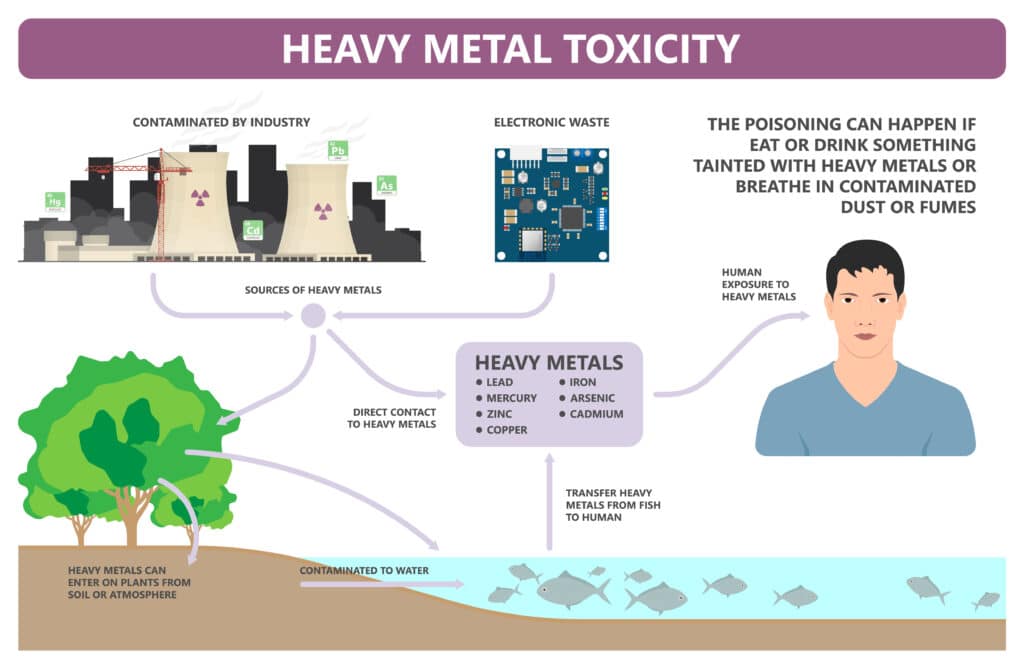
With the rise of industrial practices, water contamination has become a larger concern. Several laws are in place that limit the amounts of certain metals and other contaminants in water.
Despite current legislation that aims to protect the integrity of water and reduce the number of metals, often the levels remain unsafe. Additionally, legal limits may still pose a significant health risk for immunocompromised individuals and children.
Negative impacts from heavy metal exposure can range from acute to chronic issues, including organ damage. Heavy metals can also cause disruption in growth, immune system function, and cell repair.
By interrupting the body’s process of repairing DNA damage, heavy metals can also have a carcinogenic effect. Though the process for how this occurs is unclear, there is evidence suggesting that heavy metals may pose an increased cancer risk.
As industrial processes have increased over time, so has the presence of heavy metals in water and food. People are most at risk for developing serious ailments after prolonged exposure.
What Do Heavy Metals Do To Your Body?
Different heavy metals may affect your body in different ways. While humans need small amounts of metals in the body to stay healthy, large amounts can have catastrophic consequences.
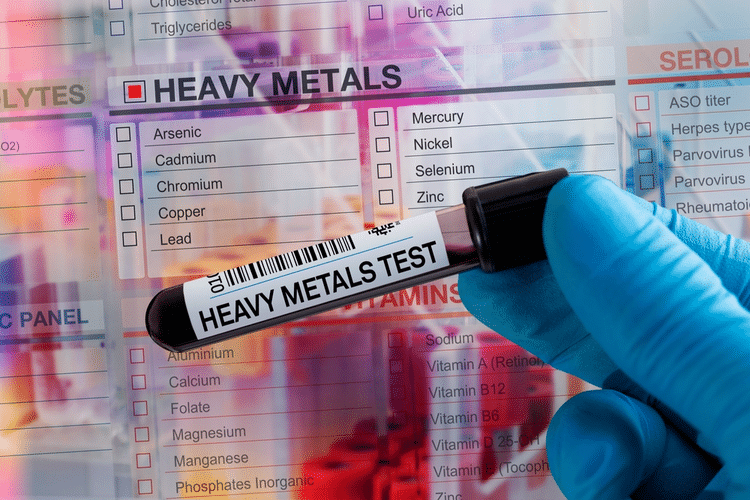
Research shows that the accumulation of heavy metals in the body can wreak havoc on the following human organs and systems:
- Musculoskeletal system
- Circulatory system
- Metabolic system
- Lungs
- Brain
- Digestive/gastrointestinal system
- Kidneys
- Liver
Symptoms of an underlying condition caused by heavy metal poisoning can vary greatly. Length of exposure also correlates with the severity of symptoms.
People with excess heavy metals in the body can experience symptoms ranging from chronic fatigue to severe skin issues. In children, heavy metal exposure can affect mental health and intelligence.
5 Most Common Heavy Metals in Water
The five most common metals you may find in water are cadmium, manganese, arsenic, lead, and copper.
All five of these metals appear on the World Health Organization’s (WHO) list of chemicals of public health concern.
General signs that there is metal in your water are discoloration, metallic or salty taste. Some dangerous metals, like lead, are undetectable by taste or color.
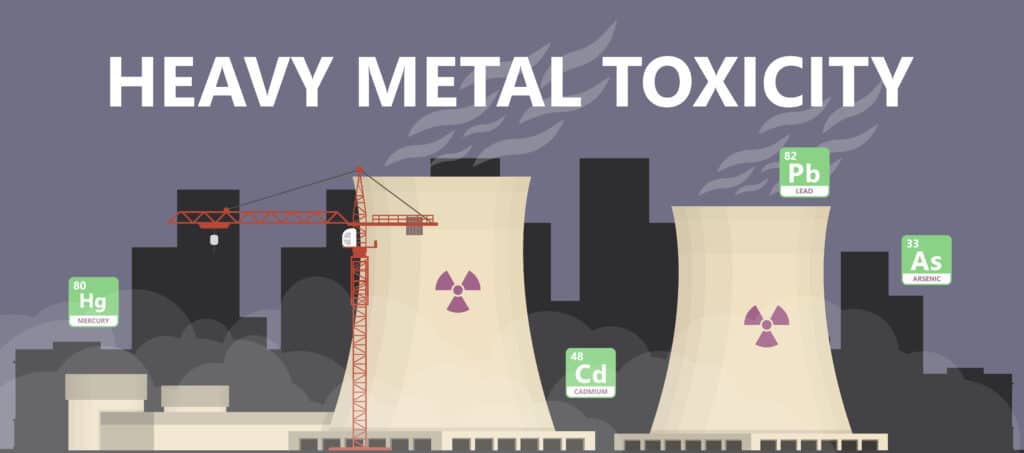
1. Cadmium
Cadmium is popular and quite common in water due to its use in batteries, metal plates, and machines. While it’s possible to have cadmium poisoning from plant and animal foods, you are more likely to find it in plumbing such as galvanized pipes.
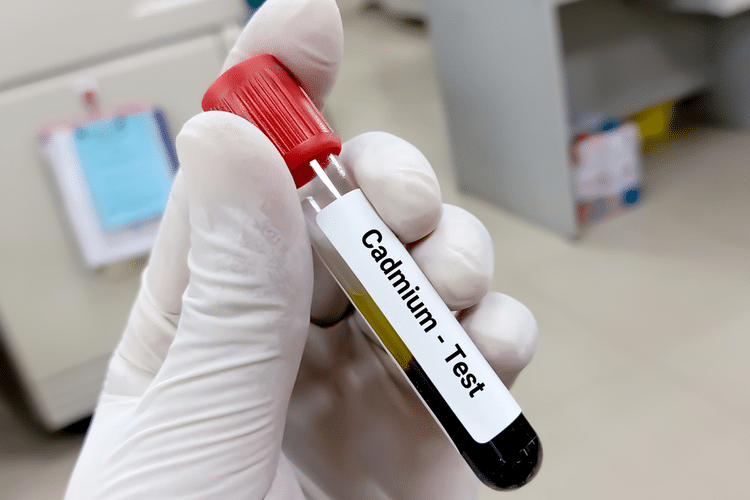
Short-term exposure to cadmium may result in vomiting. Long-term exposure, however, can damage the kidneys and liver or lead to cancer.
2. Manganese
Though a trace mineral naturally present in the body, Manganese is also a transition metal.
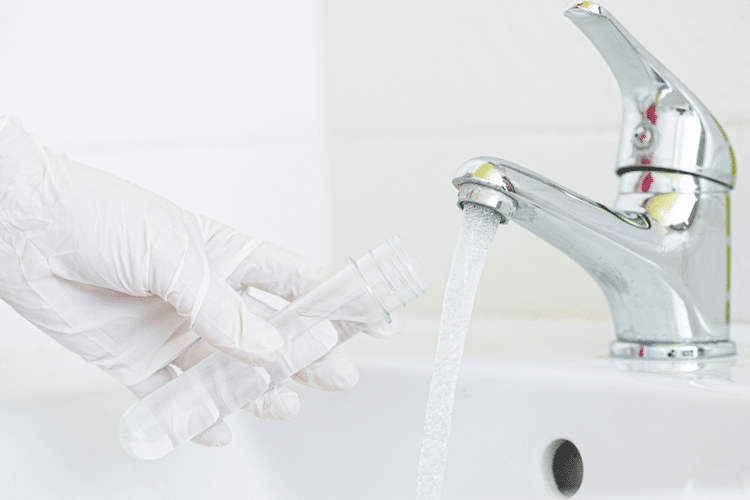
Common industrial uses for Manganese include clear glass production, deoxidizing of steel, and reducing gasoline’s octane rating. Most Manganese end up as a crucial alloy in steel production.
Adults and children who suffer prolonged exposure to Manganese (especially in drinking water) may develop problems with memory, attention, and cognitive skills. Infants may develop life-long learning disabilities as well.
To learn more about manganese in water, refer to our article on how to remove manganese from water.
3. Arsenic
Arsenic is another natural element that is present in several different compounds. Organic compounds such as groundwater and soils contain arsenic naturally.
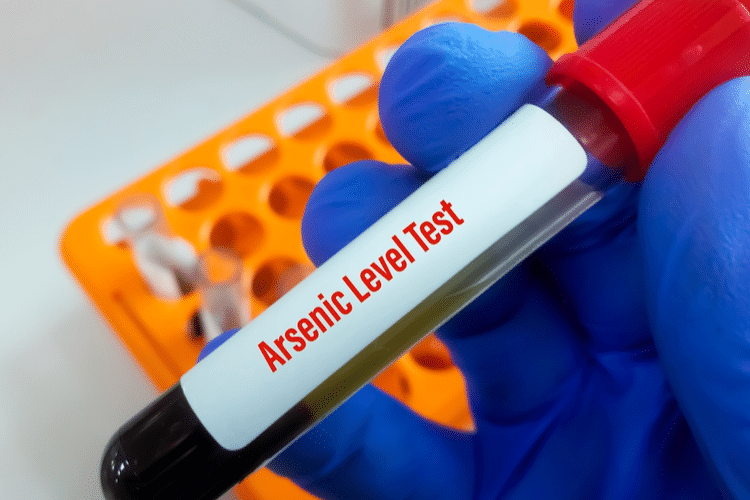
While organic forms of arsenic aren’t toxic to humans, inorganic forms are. Inorganic arsenic compounds are associated with various types of cancer, higher blood pressure, and higher diabetes risk.
Commercially, the use of arsenic occurs primarily in the electronic industry. Semiconductor devices rely on arsine gas and gallium arsenide.
Arsenic in water can be removed using treatment methods such as distillation, water filters and ion exchange. To learn more about arsenic in water, refer to our article on how to remove arsenic from well water.
4. Lead
Lead is one of the easiest toxic metals to come across. It has been useful in producing a wide range of products from paint to gasoline.
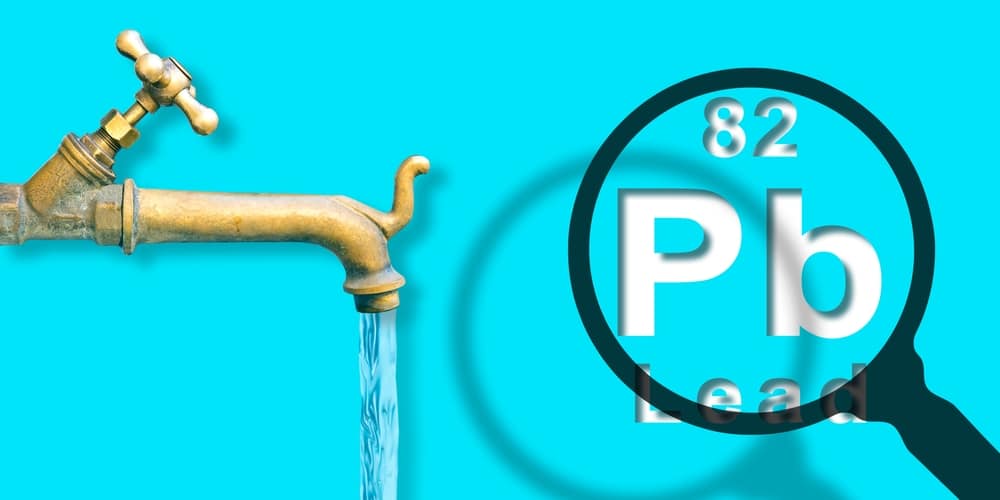
In water, Lead is easily one of the most popular contaminants thanks to the Michigan flint water incident that happened in 2014.
Children and infants are the most exposed to health issues from drinking lead contaminated water . These include learning disabilities, hyperactivity, a decreased intelligence quotient (IQ), and nervous system dysfunction.
In adults, lead can result in reproductive issues and kidney or heart problems.
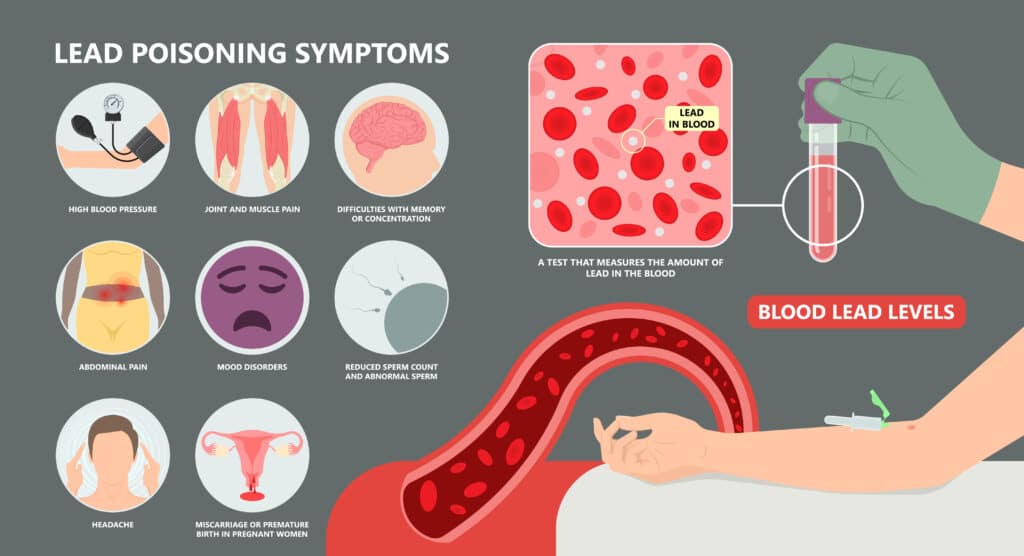
To learn more about Lead water contamination, refer to our article on how to remove lead from water.
5. Copper
The richest natural sources of copper are minerals like bornite and chalcopyrite. In drinking water, however, the most common source of copper is household plumbing.

The effects of excess copper are similar to those caused by other heavy metals. In the short term, drinking too much copper contaminated water may cause gastrointestinal issues.
Long-term exposure to copper can result in kidney or liver damage. If the copper levels are very high, they may be fatal.
Removing Heavy Metals from the Body
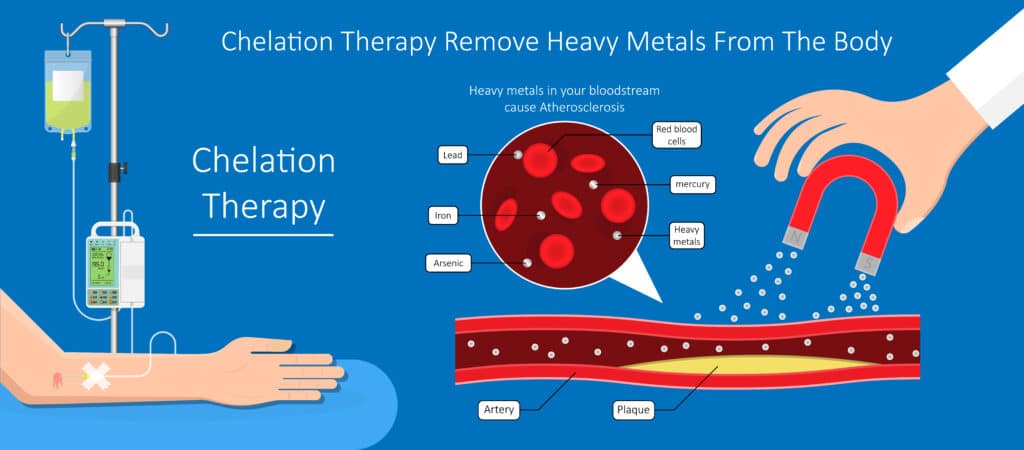
Treatment for heavy metal accumulation is to simply inhibit re-exposure.
However, in severe cases of heavy metal poisoning, chelation therapy may be necessary. Chelation consists of an intravenous administration of binding agents that will carry the metals out of the body.
How Do You Remove Heavy Metals From Water?
If you suspect heavy metals are in your water, the first step should be to perform a water test. This should include testing for a wide range of contaminants including metals.
You can opt for a home water test kit or call a lab to perform the test.
Checking the pipes in your home is essential as well. Often, the problem is old plumbing. If that is the case, the best way to solve this problem is to replace the corroded pipes.
While old pipes are a common issue, they aren’t the only source of water contamination. Sometimes, your water may have metals in it because of industrial run-off.
Unfortunately, you can’t boil water to get rid of metal. While boiling works to remove some contaminants, metals are an exception.
The best way to get rid of metal contaminants in your home is by installing a water filtration system.
Can Water Filters Remove Heavy Metals?
Water Filters can remove heavy metals from water by catching contaminant particles and only letting water molecules through. By design, the filter holes must be fine enough to trap a specific type of toxin or metal.
A good filter will include high pressure to force water through faster. Because the openings that help trap toxins are miniscule, they slow down the flow of water too.
The plumbing and fittings in a house should also be able to handle pressure well. Ensuring that all filtration parts and pipes can withstand high pressure will guarantee the efficiency and durability of the filtration system.
Best Water Filters For Heavy Metals
Existing filtration processes for removing heavy metals from water include reverse osmosis, ion exchange, and activated carbon.
Regardless of the type of filter you use, they all ultimately work by separating metal particles from the water.
Reverse Osmosis
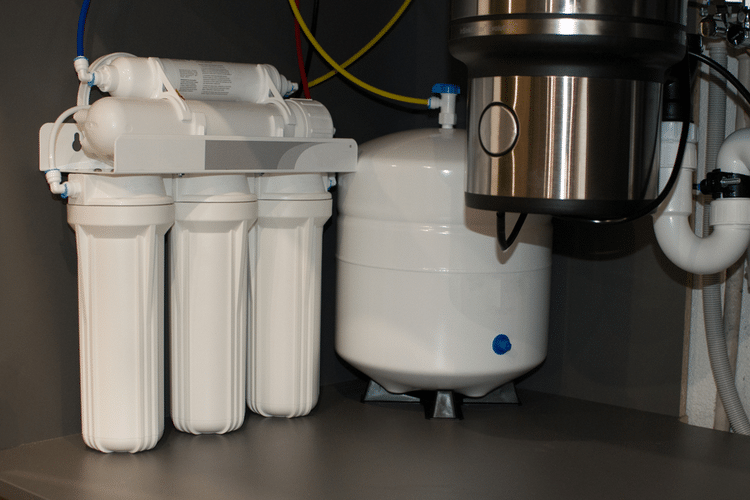
Reverse osmosis uses a multistep process to remove metal contaminants. As the name suggests, Reverse Osmosis works by reversing the natural process of particles permeating and diffusing through a water region.
Osmosis is a passive process, while reverse osmosis relies on high pressure to do its job. With the use of pressure, concentrated water can become less concentrated. Larger molecules in the water, such as metals, get blocked off from entering the same area.
So, which RO system should you get for heavy metals? The Waterdrop G3 P800 and Aquatru are ranked high in the list of best reverse osmosis systems that are very effective at removing up to 99% of heavy metals in water.
Ion Exchange Filters
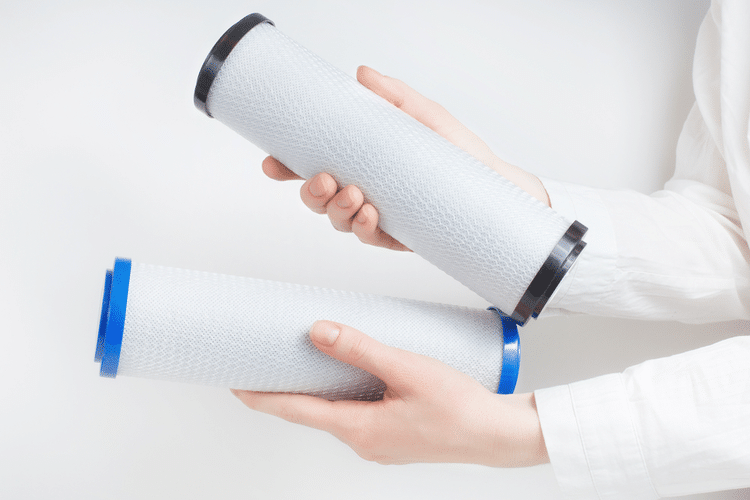
Ion exchange filters are very efficient and work similarly to the water softening process.
Ion exchange is a chemical reaction that happens when ions from contaminated water trade for an ion that has a similar charge but with a solid attached. The exchanged ion particles can be either organic zeolites or synthetically made resins.
There are three types of resins available for water filtration:
- Cationic Resins
- Anionic Resins
- Specialty Resins
A cationic resin works best to remove metals such as Manganese.
Activated Carbon Filters
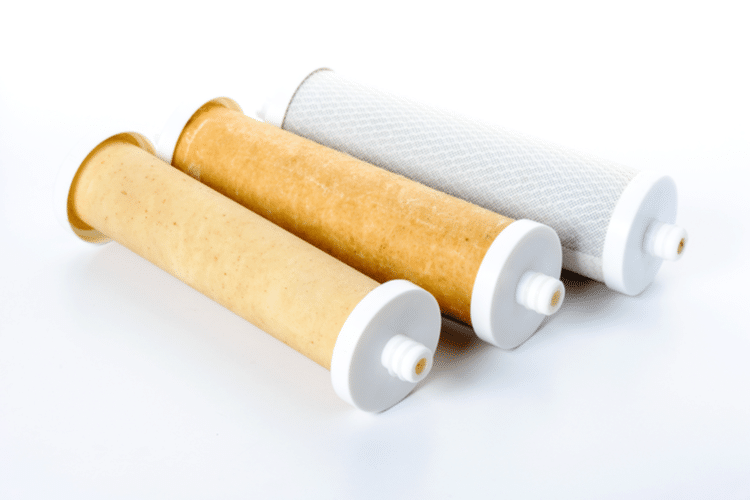
Activated carbon filters use a process called adsorption to remove metals. In simple terms, adsorption is the adhesion of water molecules to a solid surface to create a thin film.
In nature, an example of adsorption is when water molecules from the ocean become attached to the sand.
While not all adsorption filters remove metal, some do.
The key to finding a filter that works is the size of the filtration holes and using activated carbon rather than conventional carbon. The former is the same as activated charcoal.
The reason traditional adsorption filters don’t remove heavy metal is because they often use synthetically made resin. On the other hand, activated carbon filters use fewer binding agents to reduce toxins more efficiently.
You can use a 0.5 micron filter to eliminate lead and other heavy metals from your drinking water. A filter of 5 microns, by contrast, is incapable of blocking out metals.
In general, look for a small size micron and activated charcoal over other substances.
Hi Scott,
I’m getting buried with all the information on the different water purification systems so looking for some options. My house makes it more difficult because the main water entry point is in front of our living room window which is next to out front door. From the water entry point the pipes go under the floor to the two bathrooms, one kitchen and one laundry in the garage; just two of us live here.
Note: I’m taking Chelation treatments for my high lead and copper, and just acceptable mercury level in my blood. My wife does NOT want a large system in front of the big living room window so any system would have to be moved to the side of the house and be outdoors here in St Petersburg Fl.
Since the system has to be outdoors I guess a RO system will not work, yes/no? So besides moving to another home what do you suggest?
Hi Jack, there are some things to note in response to your questions. First, almost always, you’ll find that whole house systems are not RO-based systems. RO is mainly used as point of use in the house, like under sink or on counter top. There is no problem with putting a system out in the elements outside, many are built for such a life. It’s unfortunately where your main water entry is positioned. It is possible for a plumber to position a system outside and carry the pipes to the side, like you mentioned. Another option is to pick a more slender system, especially since it’s just a 2-person household and then get creative with some bushes/shrubs or otherwise try to “hide” the system where it is. I hope this helps and feel free to e-mail us for more questions or specific system recommends. Thank you for reading.
It stood out to me when you mentioned that cadmium is quite common in water. My wife and I are wanting to have a well installed on our property so that we can have access to our own water. We will have to get a good filtration system so that we don’t have to worry about finding cadmium in our water.
i have a system in place by culligan . what do i ask to make sure it works to take the heavy metals out.
Hello Jasmin, you could start by asking if there’s any documentation or manual that accompanies the system. That should, at a minimum, have some specifications or other information about what the system is intended to do and how well it works. Next, you can speak to your installer or where you purchased the system. As well, you can contact Culligan directly to ask for this information.
If heavy metals can be removed by ion exchange, than won’t a water softener (which also uses ion exchange) also remove heavy metals? Or at least the ones that form positive ions?
In particular, I’m interested in removing Thallium. I plan to use an RO filter for drinking water, but I’d like to know if a water softener will remove (at least most of) the Thallium from the water I use for showering, etc.
Hi Ed, ion exchange can indeed remove thallium, but not all ion exchange systems are effective and it depends on their system. Therefore, you’ll need to be careful to review the method the manufacturer uses in the system you’re considering to make sure it will do the job.